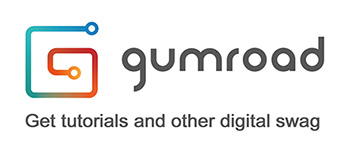Duncan Long has put it into the right words about the "death by committee" in this specific publishing industry. Maria Brophy has put the general illusion of rejection together into a blog - a recommended read.
It seriously has it advantages to have independent Authors who know what they want.
The problem most creative in this industry are facing is not a fickle temper of some art-directors or the editors, it is the committee and/or conferences, mostly consisting of salesmen: "those-who-know-what-works-and-what-not-because-of-the-numbers"
I was working on this cover for a German edition of Mike Resnick´s Stalking the Unicorn and it usually would remain in the nearly empty drawer of rejected works, but this one was different. The only given guideline was a "not-so-busy" version of the original cover created by no less than Dan Dos Santos, huh!
Something told me this will be a very nice work, I was given a great deal of freedom since no one, even the publisher didn´t knew what they wanted, ( actually this is a very bad sign) but however, I decided to finalize it with my own personal vision and also with the motivation to add this different "spec-work" to my portfolio, and wanted to put it up here into my series of "Book-cover- walkthrough´s" for those interested to see.
The left one was an initial pencil sketch, a rather Graphical approach, which should give the Agency more space for playing with colors and typo.
The right one, was done after the first round of feedback a perspectively digital sketch of the idea, since the editor liked the idea of the unicorn to be a neon-sign, which was, all-in-all, approved.
Based on the approved sketch, I did a colored one, the palette above is basically everything I used to achieve this mood. I work with 70% color on a new layer for each object, usually I group foreground, middle ground and background for later editing and changes.
Since the Editor didn´t like the Zombie-Gorilla with his umbrella *sniff*, since it would be too comic-like, I rather think of Japanese humor or English trash, but anyways, I left that funny detail out in the further work.
It appeared that some characteristics of the protagonist and some architectural details in the background needed to be adjusted, so that was in this version, but still some details are wrong, if you compare the different versions, you see what I have changed.
Here I added more details to the Newspaper, fur of the Gorilla, the hat and the trench coat, some effect on the lighting and corrected the perspective of the street-view.
The word "Roman" should be display of the genre in German, which is a nice idea, in this pre-final version I rendered out the face more realistic and added also more detail and light to it, while keeping the characteristics. But on a second look, the head is still to low which makes his appearance look wrong somehow.
After I got the message of it not being used, I put another hour of work into it, to add the umbrella to the gorilla which I liked so much in the sketch, set the head higher and added the rain to achieve a more dramatically, even "bladerunner-mood" effect. All in all, this illustration does resemble the ingredients of the original cover, without being so busy but still teasing, in my opinion.
To come back to the Headline:
How to Deal with Rejected Artworks, in General?
First thing is to not get angry about it, in most cases the artworks are great and the AD´s are happy, but one of the deciders may have a bad day, which makes your day bad as well;-)
On another note, you have put work into a project and you should at least be partially paid for it. In Germany a cancelateion fee of about 50% of the agreed payment is usually fine. Give or take something if you put more or less work into it, so at least you don't stand there with empty hands. Many international publishers know about cancelation or "Kill-fees" just ask them about it.
Well, you´re basically free to do with your work as you please.
In my case I add them to my "Art-archive" for Art-buyers to see. And if I´m really happy with them, I post something like this in my blog. Besides that, there are a lot of options, making prints, postcards or merchandise products, if you can identify with the work, or making a tutorial for a Magazine (paid) are the most useful actions.
But I´m also curious to hear other possibilities or stories, where turned down art shines in a new positive way.


























Very nice progression to let us see how you develop your concepts.
ReplyDeleteSome of the best artwork in an illustrator's portfolio is often stuff that was rejected by the client. I am not sure what the moral to this story is, but it is a fact of life for anyone working as an illustrator and it is best for those starting out in the business to realize that quality usually -- but doesn't always -- get purchased these days.